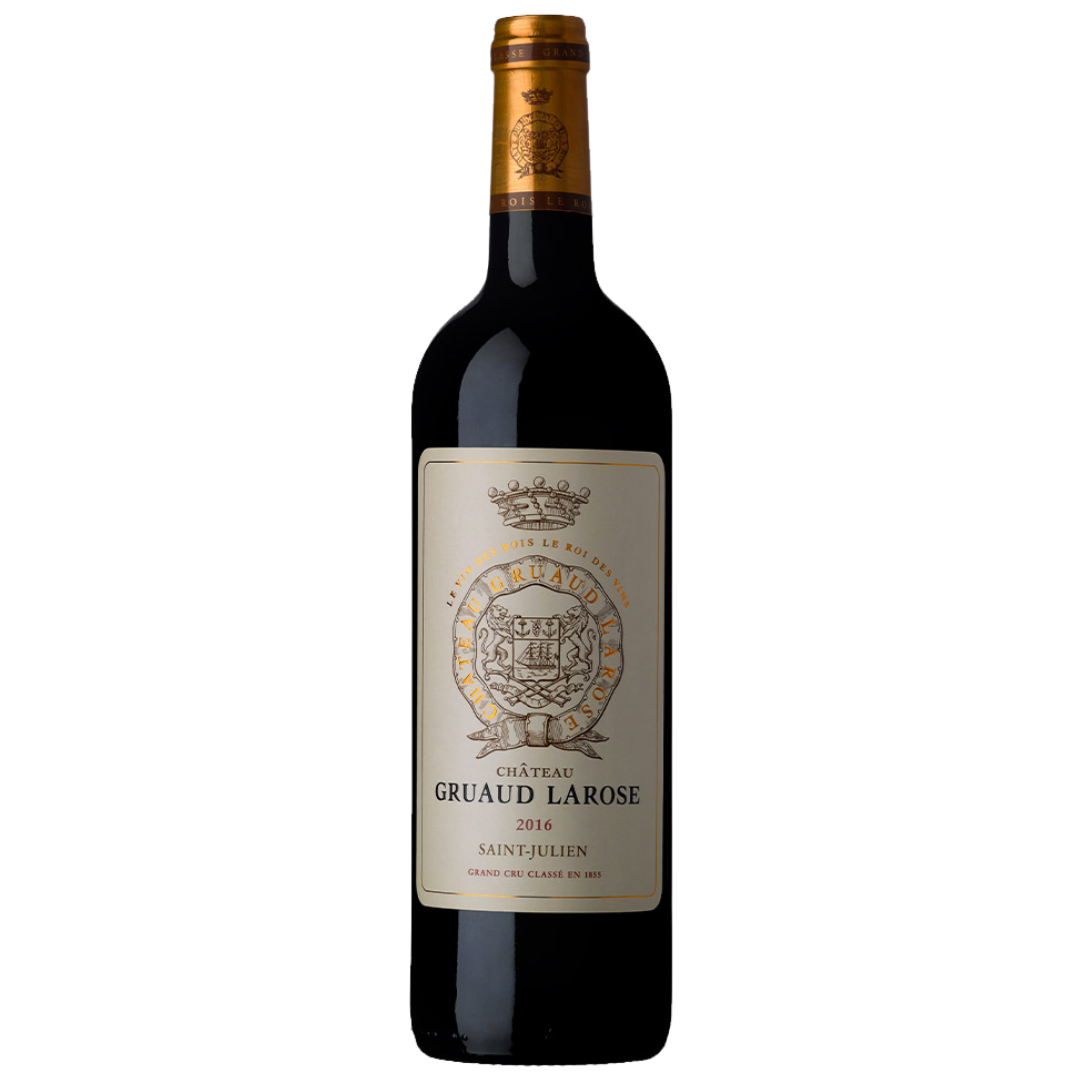Chateau Gruaud Larose Saint-Julien Grand Cru Classe 2016
Chateau Gruaud Larose Saint-Julien Grand Cru Classe 2016
Château Gruaud Larose
Note: Confirmation of product price and availability occur upon the receipt of your order. In case of changes in price, we will provide you with the following options: 1) proceed with the order based on the updated price, 2) replace your item with another product or 3) cancel your order.
Couldn't load pickup availability
Gruaud Larose 2016
CHARACTERISTICS :
Winter 2015-16 will go down in history as very mild and rainy followed by an early bud break that was rapidly mitigated by a cool and humid spring. Strong fungal disease pressure was to be observed in the vineyard. The weather in the second week of June enabled optimal flowering, but was again followed by heavy rainfall. Fortunately, good weather arrived by the end of June, along with the temperature. It lasted all summer allowing for perfect development of the grapes which, thanks to water supplies in the soil, didn’t suffer from the drought, apart from the very end of the season. High water stress in the vineyard early September blocked the ripening process, but a big rainstorm (45 mm of rain) on September 13th relaunched the evolution in the vineyard. The dry and warm weather lasted until the end of harvest thus auguring an exceptional vintage, both in terms of quality and quantity.
AOC SAINT-JULIEN
Second cru classé en 1855
AREA UNDER VINES : 82 ha
SOIL : Garonne gravel from the first quaternary, settled more than 600 000 years ago
|
VINEYARD MANAGEMENT |
|
|
Integrated Pest Control (mechanical work, organic fertilisation), Weather |
|
|
Station (phytosanitary protection), Prophylaxis (thinning out the leaves, |
|
|
removal of excess buds and shoots, green harvest). Heightening of the |
|
|
trellis. Manual harvesting, selection on a belt in the vineyard and double |
|
|
sorting at the harvest reception. 100% of the surface is managed according |
|
|
to the principles of Organic and Biodynamic Agriculture. |
|
|
AREA UNDER VINES: 82 ha/203 acres |
GRAPE VARIETIES: |
|
SOIL: |
Cabernet Sauvignon 61% |
|
Garonne gravel from the first quaternary, |
|
|
settled more than 600 000 years ago |
Merlot 29% |
|
Cabernet Franc 7% |
|
|
AVERAGE DENSITY: |
|
|
10 000 à 8 500 vines per hectare |
Petit Verdot 3% |
|
VINESTOCKS: 3 309 ; 101-14 Riparia |
|
|
AVERAGE AGE OF STOCKS: 46 years old |
|
|
VINIFICATION |
|
|
Harvest reception Tanks Alcoholic fermentation Maceration Pressing Malolactic fermentation Ageing |
Double reception of harvest and weighing of the crop. Plot selection in the tank (grape variety, terroir, age, …) 50% wood | 50% cement (thermo-regulated tanks) Yeast addition | Fermentation temperatures: 24°C - 29°C | Daily tasting of each tank 20 - 30 days at adapted temperatures | Work on the lees in the grape-pomace during the maceration period after fermentation 3 vertical presses | Immediate transfer of the press wine into barrels | Tasting and selection of three press wines among the barrels Together with the alcoholic fermentation by co- inoculation 18 - 24 months in French, fine grain, oak barrels (80% new, the rest 1-2 years old) |

Want a discount?
Become a Member!Note: Images may not necessarily reflect actual product, but we assure you that all products are authentic and in good condition. Please contact us if you require actual photo(s).

